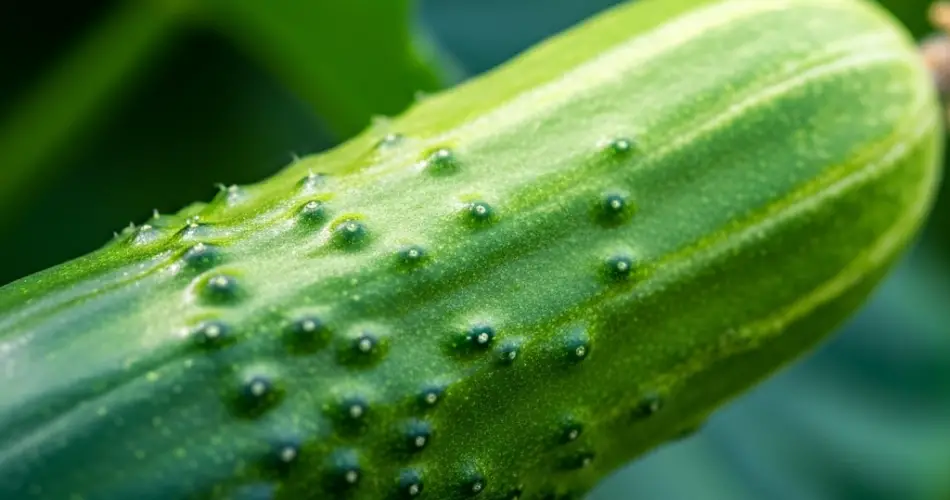Cucumbers are a garden favorite thanks to their refreshing crunch and rapid growth. But while they’re rewarding to grow, cucumbers are also a magnet for pests that can quickly ruin your crop. From leaf-munching insects to sap-sucking bugs, many pests see cucumbers as a prime target.
The good news? You don’t need synthetic pesticides to protect your plants. With a little knowledge and the right organic methods, you can keep your cucumbers healthy and pest-free while supporting beneficial insects and soil life.
Here are the most common cucumber pests and effective ways to manage them organically.
1. Cucumber Beetles
Damage:
These yellow or striped beetles chew holes in leaves, flowers, and even the fruit itself. More concerning, they also spread bacterial wilt—a disease that causes plants to wither and die rapidly.
Organic Solutions:
-
Row covers: Use lightweight row covers to keep beetles off young plants. Remove when flowers appear for pollination.
-
Sticky traps: Yellow traps attract adult beetles. Place them around the perimeter of the cucumber bed.
-
Neem oil: Spray neem oil every 7–10 days. It deters feeding and disrupts beetle reproduction.
-
Companion planting: Plant nasturtiums and radishes nearby to distract cucumber beetles or repel them.
-
Crop rotation: Avoid planting cucumbers in the same spot as the previous season to reduce overwintering pests.
2. Aphids
Damage:
Aphids cluster on the undersides of leaves and suck out plant sap, causing leaves to curl and yellow. They also excrete sticky honeydew that attracts ants and promotes mold.
Organic Solutions:
-
Blast with water: Use a strong spray to dislodge aphids from leaves.
-
Introduce beneficial insects: Ladybugs, lacewings, and parasitic wasps naturally reduce aphid populations.
-
Garlic or soap spray: Make a natural insecticidal spray with garlic, water, and a few drops of dish soap.
-
Plant trap crops: Nasturtiums and calendula attract aphids away from your cucumbers.
3. Spider Mites
Damage:
These tiny arachnids suck plant juices and create fine webbing on the undersides of leaves. Infested plants appear speckled or dusty and may decline rapidly in hot, dry weather.
Organic Solutions:
-
Water blast: Regularly hose down plants to knock off mites.
-
Neem oil or insecticidal soap: Apply weekly to infected areas.
-
Increase humidity: Mites thrive in dry conditions. Mist plants or mulch heavily to retain soil moisture.
-
Introduce predatory mites or ladybugs if the infestation is widespread.
4. Squash Bugs
Damage:
Though more common on squash, these pests also target cucumbers. They suck sap from leaves, leading to wilting and browning.
Organic Solutions:
-
Handpick: Remove adult bugs and clusters of bronze eggs under leaves early in the morning.
-
Trap boards: Lay wooden boards near plants overnight. In the morning, squash bugs often hide underneath and can be removed.
-
Neem or pyrethrin sprays: Use carefully and only when populations are high, as they can affect beneficial insects too.
-
Keep beds clean: Remove debris and old vines where squash bugs like to hide.
5. Whiteflies
Damage:
Whiteflies are small, flying insects that suck sap and cause yellowing and weakening of cucumber plants. Like aphids, they produce honeydew, attracting ants and mold.
Organic Solutions:
-
Yellow sticky traps: These attract and capture adult whiteflies.
-
Companion planting: Plant marigolds or basil to deter whiteflies naturally.
-
Neem oil: Effective when sprayed on the undersides of leaves where whiteflies gather.
-
Introduce predators: Lacewings and ladybugs help keep populations in check.
6. Slugs and Snails
Damage:
These pests feed at night, chewing large holes in cucumber leaves and sometimes the fruits themselves.
Organic Solutions:
-
Beer traps: Bury shallow containers filled with beer. Slugs are attracted and drown in the liquid.
-
Diatomaceous earth: Sprinkle around the base of plants; it creates a physical barrier that irritates and dehydrates slugs.
-
Copper tape: Placing copper barriers around containers or raised beds deters slugs with a mild electric shock.
-
Handpicking: Check under leaves or mulch in the early morning or evening.
General Organic Pest Prevention Tips for Cucumbers
-
Crop rotation: Change cucumber planting locations each year to avoid soil-borne pest buildup.
-
Healthy soil: Well-fed plants are more resistant to pests. Use compost and mulch to enrich and protect the soil.
-
Companion plants: Grow herbs and flowers that attract pollinators and repel pests, such as dill, nasturtiums, marigolds, and tansy.
-
Pruning and spacing: Proper airflow discourages pest populations and makes it easier to spot issues early.
Final Thoughts
Pest control in a cucumber garden doesn’t have to rely on chemicals. With consistent observation and a combination of preventative strategies, you can grow vigorous cucumber plants that are naturally resilient. Organic methods not only protect your harvest but also preserve the health of your garden ecosystem for seasons to come.



